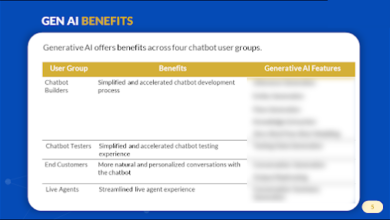How to sign up for Google Labs – and 5 reasons why you should

When you think of Google’s AI tech, you might only think of its AI chatbot — Gemini. You should know that the company has many other generative AI experiments, for enhancing your workflow, helping you generate music, optimizing your search experience, and more. Although Google hasn’t officially released many of these projects broadly yet, you can try them out via Google Labs, the company’s platform for testing ideas for features and products.
Also: Meet Veo, Google’s most advanced text-to-video generator, unveiled at Google I/O 2024
At Google l/O 2024, the company unveiled several exciting AI updates and projects, including an improved AI-infused Search experience, a major NotebookLM upgrade, and a new Illuminate experiment.
Another major Labs perk is that users can provide feedback, ultimately impacting whether the experiments are deployed and what changes are made before they are released. Keep reading to learn why you should join Google Labs and how to access each experiment.
1. AI Overviews in Search
When Google first unveiled the Search Generative Experience (SGE), its AI-infused version of Google Search, you had to opt into Search Labs to get access. By opting in, you gained access to AI insights at the top of your search results page, which displays a summary of the information Google expects will satisfy your query.
At Google I/O, the company announced that AI Overviews, supported by a new Gemini model customized for Google Search, are now available to everyone in the US.
Also: The 4 biggest Google Search features announced at Google I/O 2024
Even though the feature is rolling out to everyone, if you opt in to AI Overviews in Labs, you will get priority access. So, if this feature interests you, you should sign up.
2. NotebookLM
Last summer, Google launched NotebookLM, its “AI-first Notebook,” which works with the content you input to summarize, explain, and provide you with key topics and questions you can ask to understand the material better.
Also: How to use Google’s AI-powered NotebookLM to organize your research
You can insert a Google Doc, a PDF, or copied text, and then ask questions about the content or have NotebookLM auto-generate content from your inputs. This can be especially helpful if you are a student and input all of your class notes and materials into NotebookLM, which can not only help you stay organized, but also add AI assistance to your notes.
To test it out, I inserted a PDF of my own article, and then, within seconds, NotebookLM provided me with an accurate AI-generated summary. You can see my results in the image above.
At Google I/O, the company supercharged NotebookLM with an upgrade to Gemini 1.5 Pro. In addition to giving NotebookLM a longer context window, meaning users can upload more materials, the upgrade also gives NotebookLM the ability to output audio responses, meaning NotebookLM can take your content and generate an interactive audio conversation.
3. MusicFX
To generate music, you no longer have to have a good understanding of the topic. Rather, you can use AI with MusicFX. This is definitely more of a fun experimental tool than one that will increase your productivity.
Also: Meet Gemini AI Live: Like FaceTiming with a friend who knows everything
All you need to do is type in a prompt of what you’d like to hear and then, within seconds, your track will be available for your listening pleasure. You can even download or share your masterpiece.
4. Illuminate
Research papers tend to be long and use a lot of technical jargon that can be difficult to understand. Illuminate is a new Google Labs experiment that aims to help you break down research papers into short audio conversations.
Also: Google’s new ‘Ask Photos’ AI solves a problem I have every day
Illuminate uses AI to adjust the content to your learning preferences so that you can have an easier time understanding the material. You can access the waitlist and learn more about Illuminate by visiting Google Labs.
5. Submitting your own generative AI experiment
If you are a developer working on personal AI projects, you can share them with Google for a chance to be featured in Google’s experiment gallery.
Google is looking for “projects that push the boundaries of what code can do. Projects with unique visual aesthetics. Projects that help inspire other coders.” The page includes different criteria that the company is looking for, as well as the form to submit the experiment’s details.
FAQs
How do you join Google Labs?
If you’re interested in trying any of these experiments or future ones, sign up for Google Labs. All you have to do is visit the Google Labs homepage and then click on the experiment you want to try. Depending on the experiment, the sign-up process may vary, but generally, it will prompt you to sign in to your personal Google account or create a new one. Remember to use your personal account because many features, including SGE, are blocked for workplace accounts.
Also: 3 new Gemini Advanced features unveiled at Google I/O 2024
Other experiments have specific instructions that you need to follow to be an early user. If the experiment you signed up for has a waitlist, keep a close eye on your email, which is where you will be notified when you get off the list.



